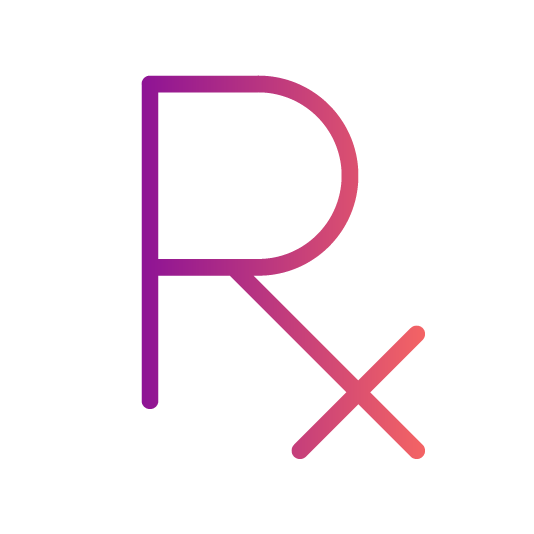If you’re worried about the cost of your prescription medications, help may be available. Different options and resources are available to help reduce out-of-pocket prescription medication costs.
Tools to help you lower your prescription costs
You can use the tools below yourself to find lower-priced medications or resources that can connect you to financial assistance.
Note: These tools may require access to the internet or a mobile phone. If you don’t have access to the internet, try reaching out to a friend or family member, local library, community center, or check if local business offers free Wi-Fi. Your doctor’s office or pharmacy may also be able to help you access these resources as needed.

Lower-cost prescriptions and discounts
Drug manufacturer coupons
Discounts for medications directly from the manufacturer. Check each drug manufacturer’s website to see if a coupon program is available.
GoodRx
GoodRx is a website and mobile app that compares drug prices across pharmacies and finds coupons and discounts for your prescriptions.
RxOutreach
RxOutreach is a nonprofit, digital pharmacy that provides over 950 affordable medication strengths to people across the United States. Medication prices are significantly less expensive than retail pharmacies.
Prescription assistance
FundFinder
FundFinder is a free web app created by the PAN Foundation that helps you track more than 200 patient assistance funds from nine charitable organizations.
Medicine Assistance Tool (MAT)
MAT, the Medicine Assistance Tool, is a search engine that helps patients, caregivers, and health care providers learn more about the resources available through biopharmaceutical industry programs.
NeedyMeds
NeedyMeds is a website that provides information on healthcare programs, offering direct assistance and facilitating programs.
RxAssist
RxAssist is a website that helps learn ways to use pharmaceutical company programs and other resources to help reduce your medication costs.
RxHope
RxHope is an online patient assistance program that advocates and facilitates patients in getting their medications for free or at a small co-pay. Note that you’ll need a healthcare professional to assist with your application.

Tips to help you reduce prescription costs
Below are more tips on reducing prescription costs. These tips don’t require internet access but may require you to work with a provider or pharmacy.
Use generic medications if your healthcare provider says they are appropriate
Generic medications are as effective as name-brand medications and often offer high-cost savings. Check to see if your medication has a generic equivalent or ask your provider if you can switch to a generic. Visit Generic Name Drug Listing to check generic drug listings.
Ask your healthcare provider about using a different medication
If your medication out-of-pocket cost is high, ask the pharmacy for options that you can discuss with your healthcare provider. Your provider might be able to prescribe another equally effective and less expensive medication.
Consider using a different pharmacy or a mail-order pharmacy
Consider calling multiple pharmacies near you to review your medication list and compare out-of-pocket costs. If your insurance plan has a mail-order pharmacy option, compare the out-of-pocket costs between a retail (such as CVS and Walgreens) and a mail-order pharmacy.
Compare health insurance plans
If you are insured through your employer or a marketplace plan, you can evaluate your options during your Open Enrollment period.
If you have Medicare, visit Medicare.gov to get specific Medicare drug plan and Medicare Advantage Plan costs, and call the plans you’re interested in to get more details. For help comparing plan costs, contact your State Health Insurance Assistance Program.
Apply for a financial assistance program
Financial assistance options are available from multiple sources—the federal government, state government, nonprofit programs, and the private sector, which usually includes for-profit companies. For more information about specific programs you can apply to, review PAN’s guide to finding financial assistance for your prescription medications.

Talk to a healthcare professional
Tell your healthcare professional or pharmacy you are concerned about the out-of-pocket cost of your medications. If you’re not sure what to ask, try some of the following questions:
- Can you or someone in your office help me find out how much this medication will cost out-of-pocket?
- Is there an equally effective medication that may have lower out-of-pocket costs?
- Does this medication have a generic equivalent that I can use that would be cheaper?
- Could a change in dosage or frequency help reduce my out-of-pocket costs but still be effective?
- Do you have samples of the medication that I can use to help me save out-of-pocket costs, at least for a month?
- Can you or someone in your office help me check with my health plan to see whether a 30-day, 90-day supply, or mail-order would be a better deal for me?
- For physician-administered drugs: It’s easier for me to pay one month at a time. Is it possible to spread out my payments?
- For patients receiving cancer treatment: Would it be cheaper to receive my treatment by infusion or IV instead of orally?
- Can you or someone in your office help me find financial assistance to cover my out-of-pocket costs?
- For people with commercial insurance: Are there drug coupon discount cards for my medications?
- Is there a charitable foundation that I can apply to?

-
Subscribe to news
Sign up to receive PAN news, from helpful articles to action alerts.
Subscribe today -
-



